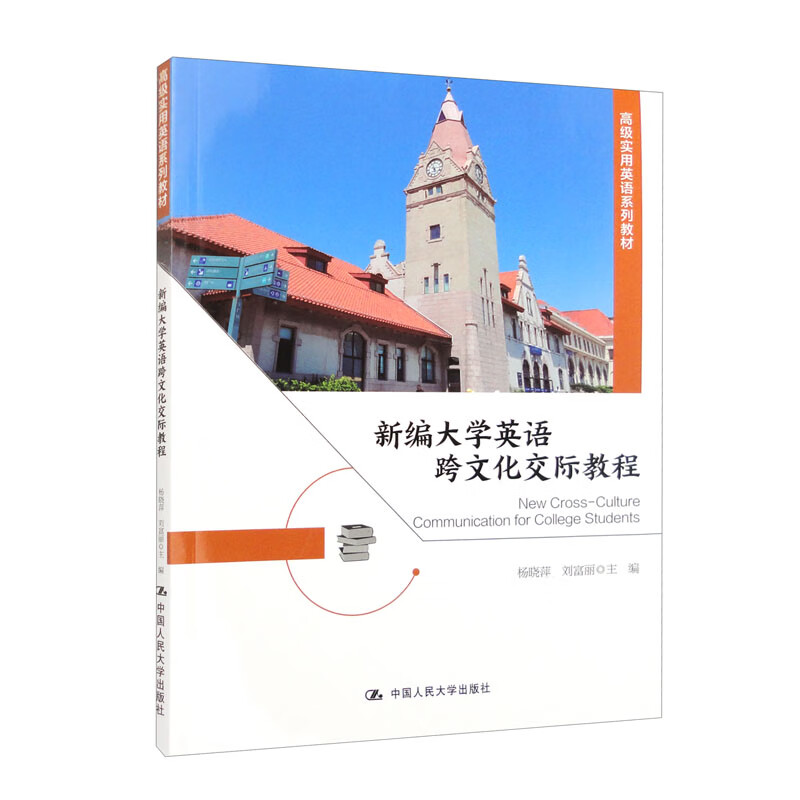
新编大学英语跨文化交际教程(高级实用英语系列教材)

- ISBN:9787300314617
- 装帧:一般胶版纸
- 册数:暂无
- 重量:暂无
- 开本:其他
- 页数:180
- 出版时间:2023-02-01
- 条形码:9787300314617 ; 978-7-300-31461-7
本书特色
新编大学英语跨文化交际教程以非英语专业大学生为学习对象,以日常生活、工作、学习为主线,采用中西文化一一对比的形式,以案例分析为导入,增强趣味性、实用性和文化对比性;注重文化现象分析,培养文化分析能力和思辨能力。将抽象的跨文化交际理论放到补充阅读Cultural Information部分,供有兴趣的同学进一步深入学习。新编教材有大量中国文化元素,有利于提升文化自信。课后练习增加中国文化翻译,培养中国文化输出能力。另外,新编教材采用新形态教材模式,在浙江省高等学校在线共享平台站(www. Zjooc.cn)建设在线课程《大学英语跨文化交际课程》,以微课形式延伸和拓展课堂教学内容,以在线讨论和在线测试形式引导学生自主学习,建设“互联网+教学”的模式,使课程多元化,立体化。
内容简介
本教材是大学英语后续教材,主要针对非英语专业大学英语二年级学生,在学完基础英语后学习,学习中西文化知识,拓展文化视野,培养跨文化交际能力。
教材内容共四部分,十单元。**部分为总启,以不同国家不同性格特征引入,介绍东西文化差异的价值观差异。中国文化受儒家思想和道家文化影响,崇尚伦理、和合。西方文化则受文艺复兴影响,崇尚自由和人性。表现在价值体系上西方文化突出个体主义,强调个性化,而东方文化则重视群体间和谐,崇尚中庸之道。
第二、三部分在**部分的基础上,阐述具体文化现象,全面介绍东西文化差异的具体体现。第二部分介绍日常生活中的文化差异,包括家庭、朋友、娱乐、饮食文化等;第三部分介绍工作、学习和社会、政治等方面的文化差异。
第四部分在全书中起总结作用,介绍文化冲突及对待文化冲突的正确态度。教材的编写目的是提高跨文化交际意识,培养跨文化交际能力,从而培养具备全球化视野的大学生。
目录
PartI Diff erent Values
Unit 1 Chinese People .......................................................003
Passage A Chinese Character ..................................................003
Passage B The Legacy of Confucianism ................................009
Cultural Information Chinese Ancient Mythical Stories ........018
Unit 2 Western People .......................................................021
Passage A English Character ..................................................021
Passage B American Character ...............................................026
Cultural Information Infl uence of Geographic Environment ...033
Unit 3 Values and Worldviews ............................................035
Passage A East and West, Diff erent Values .............................035
Passage B Holistic or Dualistic View of the World ................044
Cultural Information Tightness and Looseness in Individualistic
and Collectivistic Cultures .....................................................053
PartII Diff erent Daily Life
Unit 4 Family and Friends ..................................................059
Passage A American Family ...................................................059
Passage B Social Relationship and Friendship in East and West ...067
Cultural Information Impersonal Relationship of Americans ...074
Unit 5 Sports and Diet ........................................................077
Passage A Sports and Recreation in America .........................077
Passage B Chopsticks or Forks, Taste or Nutrition ................084
Cultural Information Unhealthy and Overindulgent Eating in America .........................................................................092
Part III Diff erent Attitudes to Education and Work
Unit 6 Education .........................................................097
Passage A Education in China and the US..............................097
Passage B American Education ..............................................104
Cultural Information Home School Education in the UK ......109
Unit 7 Diff erent Attitudes to Work ....................................... 111
Passage A Diff erent Attitudes to Time ....................................111
Passage B American Attitude to Work ....................................119
Cultural Information Time Orientation and Activity
Orientation................................................................125
Part IV Intercultural Adaptation
Unit 8 Meeting Diff erent Cultures .......................................131
Passage A Silence in Diff erent Cultures .................................131
Passage B Face and Facework ................................................139
Cultural Information Verbal or Silent Communication ..........145
Unit 9 Globalization ............................................................147
Passage A Understanding Intercultural Confl icts ...................147
Passage B Building a Human Community with a Shared Future................................154
Cultural Information Ethnocentrism, a Barrier in Intercultural
Communication ......................................................................161
参考文献 ...............................................................................163
节选
Chinese culture made China a world power for much of its history and is doing so formodern China. What are its features? The fundamental differences between Chinese and Western cultures are that Chineseculture promotes the group and stability while Western culture promotes the individual andchange. Chinese culture reflects the unique demography of China. The Chinese are said tohave common descent from the Yellow Emperor and the Yan Emperor. While this beliefis legendary, nearly all Chinese are linked by clan, a kind of blood relation. A clan may comprise, or nearly comprise, a whole village or suburb, and counties, provinces and state are conglomerates of a vast number of villages and suburbs with such clan populations.Within each clan population or grouping, in whichever village or place, there are smallersubdivisions or groupings of extended family which subdivide further into linear and nuclear families. Chinese society thus consists of an aggregate of clan and family groupings, rather thandivided into hereditary classes or castes. Put it in another way, Chinese society appears as amass of circles or groupings rather than status or levels. Within each circle or grouping thepeople are related in clan or closer kinship and off er cooperation and succor to each other.Moreover, the smaller groupings can draw on the greater resources of the larger, if of thesame clan. The groupings have also been likened to grains of sand which are marvelously adapted against adversity. Whatever the misfortune, a tray of sand will absorb a shock with the certainty that some grains will survive.
作者简介
杨晓萍, 女,台州学院外语学院副教授,从事大学英语教学,对中西文化有一定的研究。主编《大学英语跨文化交际教程》,该书于2012年由高等教育出版社出版发行,2020年,主持浙江省高等学校在线开放课程共享平台(https://www.zjooc.cn)在线课程《大学英语跨文化交际教程》。
-

众神的星空
¥33.2¥79.0 -

THE GREAT GATSBY-了不起的盖茨比
¥7.1¥16.8 -

恋爱中的女人-中译经典文库-世界文学名著-第五辑
¥9.6¥29.0 -

企鹅口袋书系列·伟大的思想20:论自然选择(英汉双语)
¥8.4¥14.0 -

本杰明:富兰克林自传
¥4.7¥13.5 -

包法利夫人
¥11.3¥29.8 -

地心游记(纯英文)/床头灯英语.3000词读物
¥6.0¥15.8 -

许渊冲译千家诗
¥22.4¥59.0 -

安徒生童话精选
¥12.8¥40.0 -

莎士比亚四大悲剧(世界文学名著英文版)
¥10.6¥32.0 -

了不起的盖茨比(纯英文)/床头灯英语.3000词读物
¥5.0¥12.8 -

双城记-(英语原著版)
¥8.6¥20.0 -

韩文的创制与易学
¥9.9¥26.0 -

呼啸山庄-英语原著版
¥7.7¥18.0 -

圣经的故事-英汉对照.房龙经典
¥10.0¥39.8 -

教师-中译经典文库-世界文学名著-第五辑
¥6.0¥14.0 -

柳林风声
¥9.4¥24.8 -

3词就够了
¥17.1¥45.0 -

命案目睹记
¥14.5¥33.8 -

MV美语Rambo Show:Rambo教你地道美式口语
¥25.3¥32.8







